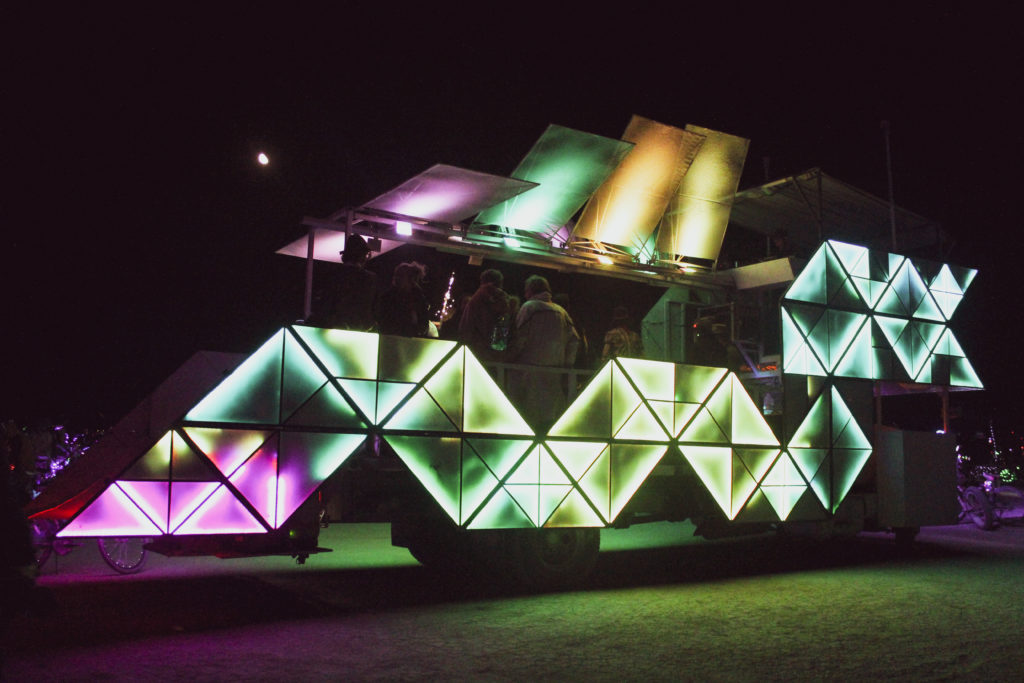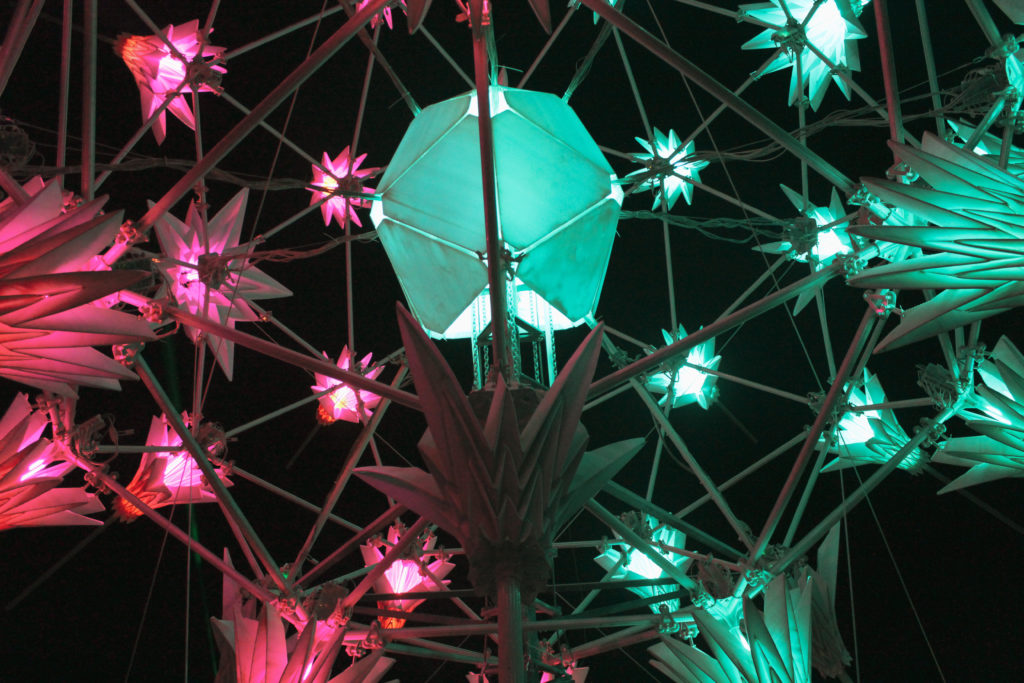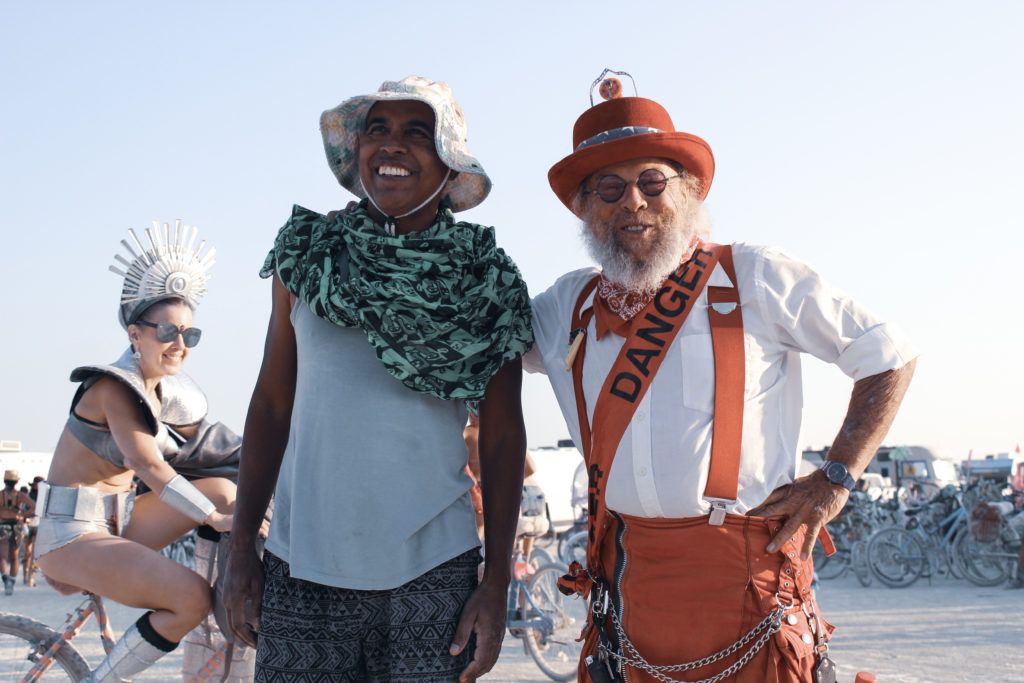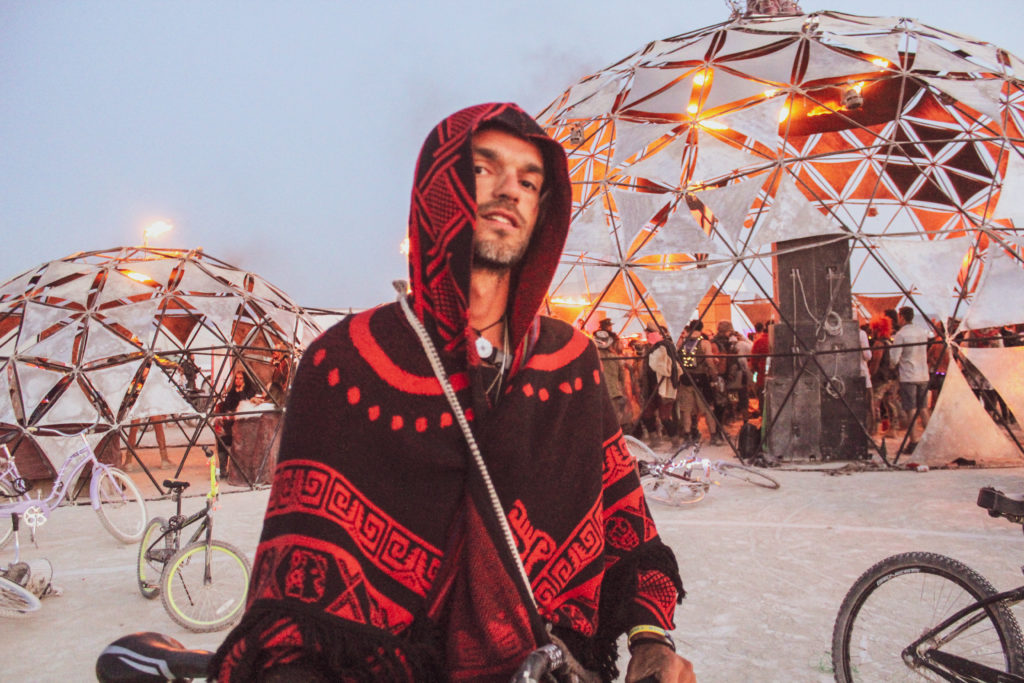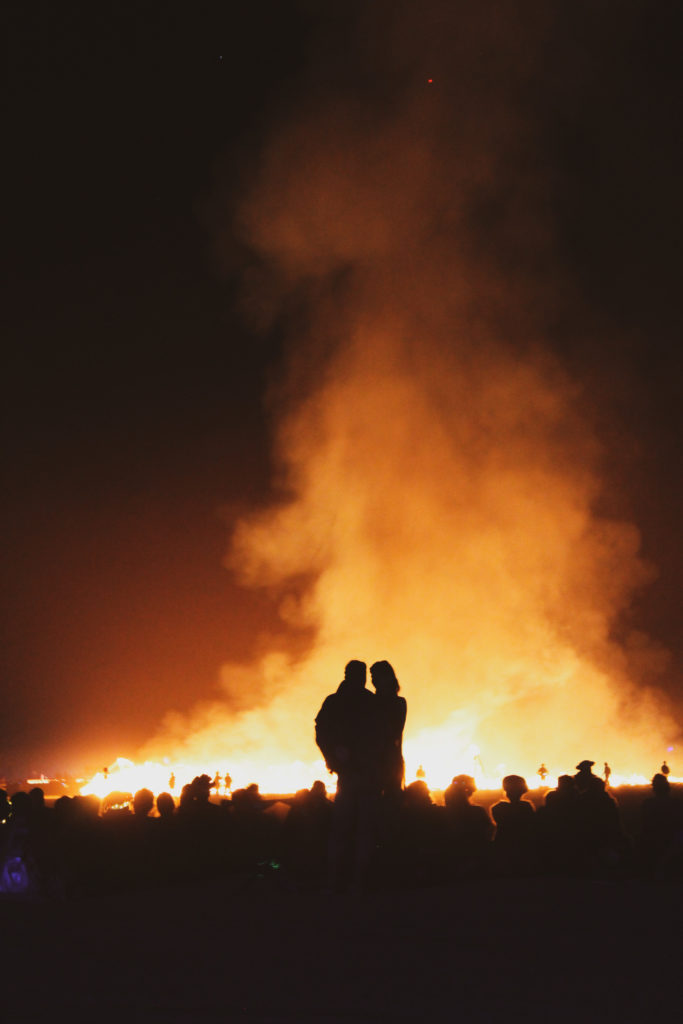People can say what they want about Burning Man- that it causes immense carbon emissions (which goes against its principles), and has been sold-out and popularized into the corporate world, etc., and these things are true. But the point people are missing, and haven’t felt is this community open to adaptation and change, coupled with acceptance, to combat the hypocrisy of the global world in which we live. This acceptance encompasses the bad which comes from good, and good which comes from bad. We cannot glorify nature and condemn technology, or glorify technology and condemn nature; we must realize we live in a world where they are now, in large part, very dependent on each other. Technology must be, in many ways, modeled after nature, and the survival of natural resources against pollution and other human activities is largely dependent on our ability to find the technology to undo the problems we have caused with technology. It is in this madness that we find ourselves living everyday life in the United States and much of the world, uncertain of the facts we are given by news and the media, and still feeling as though the structures around us protect us from harm when we know that they often cause it.
This past Burn, there was a light show of 600 Drones (above), created by Studio Drift, a couple from Amsterdam, who modeled the design after the migratory flocking of birds. Here, we can see how technology can not only mimic nature perfectly, but also do so in a way that shows the peaceful side of technology, with an immense capacity for creating interactive art and live art installations. Ironically, as many issues posed by climate change drive bird species to extinction, this Drone show may well be a way for people of the future to see how birds once migrated. Interestingly, the Playa (the desert landscape of Burning Man) doesn’t hold any life (no plants can grow there, nor animals live there), but there is a different energy of liveliness created by a collective consciousness created by the human visitors who come onto the playa with intentions for their week there, artists who have been tirelessly working on their installations for months, and workers who have been creating the structures (both physical and institutional) so that Black Rock City (the formal city which hosts Burning Man) is created.
In fact, the creator of Burning Man Mr. Larry Harvey said, “The essence of the desert, is that you are free to create your own world, your own visionary reality”, so that there is a ”deep parallel between desert and cyberspace”; “‘Both Burning Man and the Internet make it possible to regather the tribe of mankind.” Where there is chaos, there is room for endless possibilities. However, Harvey also hinted that the desert and Burning Man also reveal the limits of technology by showing the spirituality which can be shared by collective living beings, which no technology can emulate. In many religious contexts, the desert is a place for reflection on our relationship with God, and reminds us of our vulnerability by stripping us of most resources under harsh conditions.as we are challenged both physically and mentally.
As MARÍA GONZÁLEZ DE LEÓN said,
“The desert reveals the paradox between simplicity and complexity. Both visually and symbolically, it exalts clarity, honesty and cleanliness in all its manifestations. It is maximum freedom and at the same time the impenetrable maze. The void that it projects works as a complete mirror that shows us, reflected, as a synthesis of what we are. In the desert, the exterior void obliges us to look inwardly, making it plain what poets, philosophers and scholars have been saying for centuries: that which is outside of us reflects us.”
Thus, the location and nature of Burning Man brings us to the human paradox, of endless submissiveness to nature, the elements, and God, while simultaneously wired for adaptation and creation as influenced by our outside world, and how we interpret it.
While technology moves us forward in many ways, we can also see how it contributes to our access but not necessarily sustainably, especially with Art Cars (below). Although not sustainable in use of gas, these are another form of art themselves, and fuse music with movement, which encourages dance and brings people together in amazing ways. It is seen within all forms of life, animals, plants, everything, the need to create. We build nests, we raise young, we make art installations and music and artcars, we tell stories of our experiences and those which we imagine and dream of, much in the same ways that octupi can build their own homes with coral decorations. We are all united by this thread of the need to create, and adapt to the changing world around us. What we create is destroyed at some point by nature and other forces, or else lives on through time. In this way, the world has always been shaped by innovation, and the ability to create new and adapt to circumstances which change.
The Dragonami from Colorado
Flower Power Art Installation

